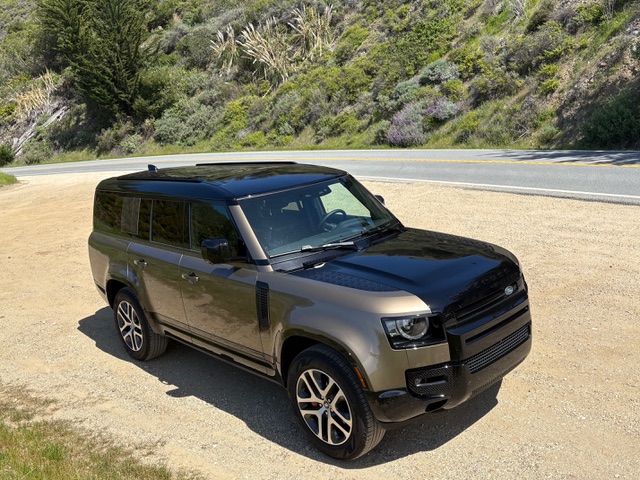
Six years into its second tenure, the 2025 Land Rover Defender lineup maintains its boxy military appearance, but with modern design updates. The offerings vary greatly, the rugged but versatile two-door Defender 90 to the unwieldy three-row, eight-passenger Defender 130.
The Defender 90 remains the smallest, most maneuverable sport utility vehicle in the British manufacturer’s lineup. The Defender 130 looks the same. But it’s the carmaker’s biggest SUV, second most powerful, and is more than 2 1/2 feet longer than its sibling. That changes everything.
The Defender 90 is equipped with a two-liter, turbocharged inline four-cylinder engine that produces 296 horsepower. It’s nimble, particularly considering its background and utilitarian appearance. The Defender 130 not so much. Parking in traditionally sized spaces is problematic. Stability is tested in strong winds.
With 395 horsepower, six-cylinder engine and an eight-speed automatic transmission, the Defender 130’s girth provides an overall awkwardness. Its braking is soft and there’s extreme wind rush. Gas mileage averages are 18 miles per gallon in city driving, 21 mpg on the highway. Acceleration from 0-to-60 miles per hour takes 6.4 seconds.
Land Rover and Defender models’ first run lasted 67 years after slightly more than two million vehicles were built. The current offerings, while related to their predecessors and connected to WWII military vehicles, are far different.
Like many enduring manufacturers, Land Rover has a sorted history. It’s owned by Jaguar Land Rover, a subsidiary of the Indian automotive company, Tata Motors. It acquired Jaguar Land Rover from Ford in 2008.
Changes occurred when the Defender was reintroduced in September 2019 as a 2020 model, notably from rigid axles to independent suspension and from body-on-chassis to integrated bodywork. Daily driving on city streets and freeways was improved, off-road toughness remained.
In all Defender models, occupants sit high in the cabin, with superior front and side vision. Rear vision is the vehicle’s biggest issue. The exterior-mounted spare tire obscures part of the rear window, the mid rear-seat headrests further block the driver’s view.
Standard on all Defender models is forward collision warning, automatic emergency braking, lane-keeping assist, blind-spot warning and a driver inattention warning system. There’s a 360-degree parking camera and a sonar system that calculates water depth called wade-sensing. Adaptive cruise control is a stand-alone option.
Additional standard equipment is plentiful: grained leather seats to a heated and power-adjustable steering wheel and rain-sensing front wipers and rear wipers and an opening panoramic roof. The Meridian sound system is superior.
As a large luxury SUV, the Defender deserves its place. It has 13.7 cubic feet of space with all three rows up, 88.9 cubic feet of cargo room when all seats are folded.
The Defender 90 has a starting MSRP of $56,400. Its healthy list of options pushes the price to $70,683. The Defender 130’s starting MSRP is $100,900. Options and taxes push the total to a hefty $106,092.
The SUV has a long history and has endured the manufacturer’s tribulations. That’s great for brand loyalists. But the 2025 Defender 130 is nearly 18 feet and it’s a deal breaker for the vehicle as a practical daily driver.
If safaris and robust outback treks are on the horizon, it’s what the big Land Rover does best. The Defender 130 has nearly 12 inches of ground clearance, advanced four-wheel drive and computer-aided traction controls. Traveling off the grid? Enjoy.
But the Defender is overpriced and an inefficient inner city and suburbia dweller.
James Raia is a syndicated automotive columnist, freelance writer and editor based in Sacramento. E-mail address: [email protected].